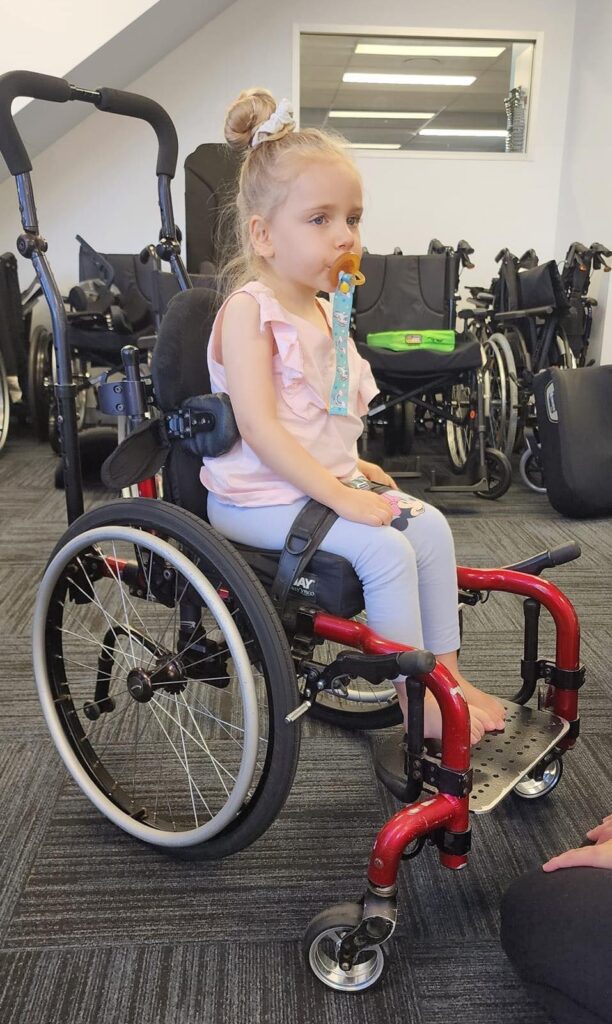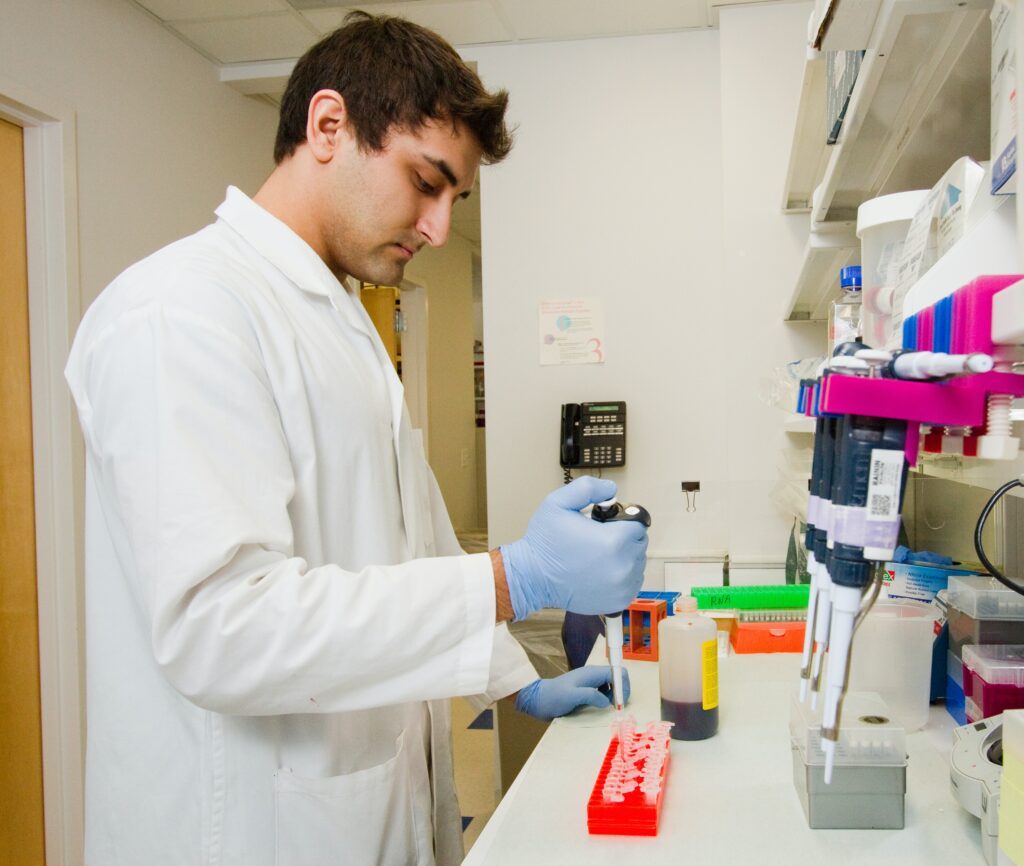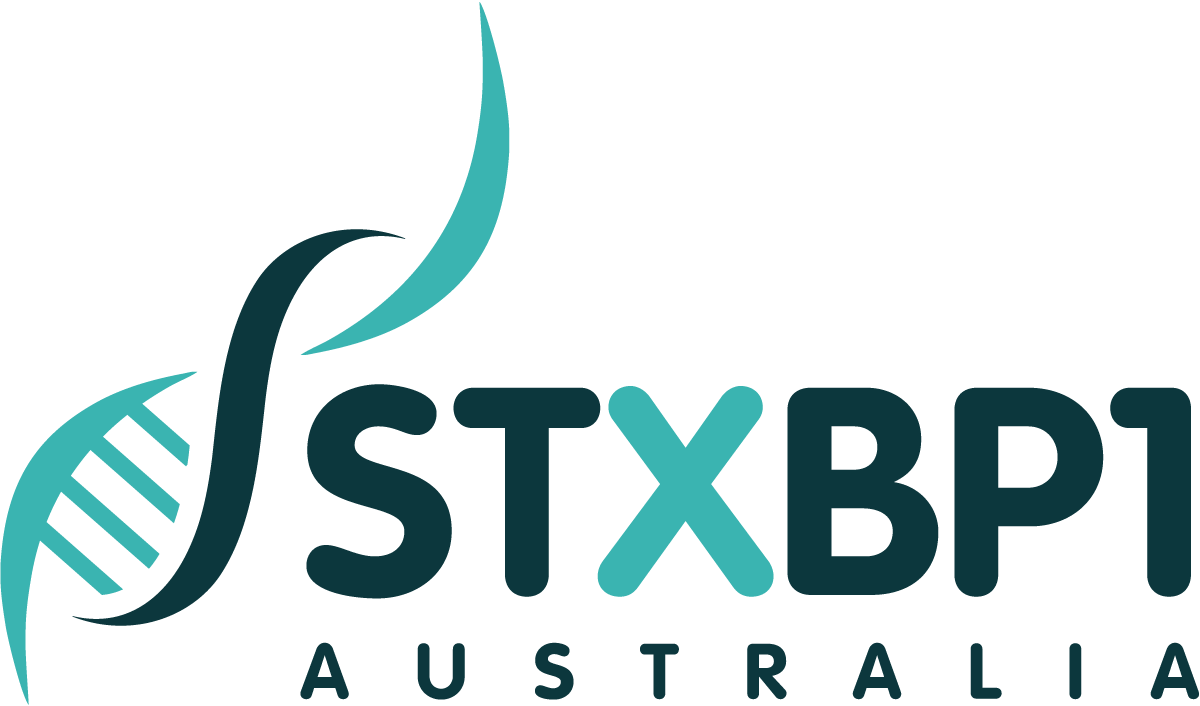
Unpacking STXBP1
What is STXBP1?
STXBP1 is not the name of a medical condition but rather is the name of the gene that is affected. The STXBP1 gene is located on chromosome 9q34.1 and was first discovered in 2008 in studies of some patients with Ohtahara Syndrome, a severe early onset epilepsy. Since this initial discovery, our understanding of STXBP1 disorder has expanded, revealing a range of patient symptoms.
kEY sYMPTOMS

Consistent Symptoms (up to 100%)
- Global development delays
- Decreased muscle tone (hypotonia)
- Speech impairment, often non-speaking
Frequent Symptoms
- Variable cognitive impairment (most often severe)
- Variable seizure disorders
- Epilepsy intractable in < 20%
- Epileptics spasms
- Increased muscle tone (spasticity)
- Movement disorders, particularly ataxia or tremors (abnormal and uncoordinated movements of arms and legs)
- Behavior disorders, including repetitive behaviors (stereotypies) or autism spectrum disorder
- GI disregulation
In most cases, for patients with STXBP1, the pathogenic STXBP1 variant occurred spontaneously (de novo) and was not inherited from either parent. STXBP1 changes impair the vesicular release of neurotransmitter along the synapses. A single copy of a damaged gene is enough to cause the disorder.
1 : 30k
ESTIMATED INCIDENCE RATE
85%
PRESENT WITH EPILEPSY
1 IN 5
DISPLAY AUTISTIC FEATURES
López-Rivera et al, 2020, Abramov et al, 2020, Stamberger et al, 2016
diagnosis
The diagnosis of a STXBP1-related disorder is currently made by looking at the DNA sequence of the STXBP1 gene via targeted genetic panels or whole-exome sequencing.
The estimated incidence rate for STXBP1 disorder is ~1:30,000, and STXBP1 was recently identified as one of the five most common genes for epileptic encephalopathies and related neurodevelopment disorders.

Treatment
Currently, there are no curative, disease-altering, or specific therapies available for individuals with STXBP1 encephalopathy. Medical management is principally symptomatic and supportive. Treatments are multi-disciplinary and can include:

- Neurologists to aid in the management of seizures/epilepsy and movement disorders.
- Evaluations by physical, occupational, and speech therapists to identify needs for ongoing therapies and help develop skills
- Physiatrists (rehabilitation specialists) to identify therapy and equipment needs and help optimise function.
- Dieticians for ensuring adequate growth; a dietician specialising in ketogenic diet (KD) would be a necessary part of the treatment team if KD was initiated for seizure management.
- Neuropsychiatric testing to assess for cognitive impairments and intellectual disability.

